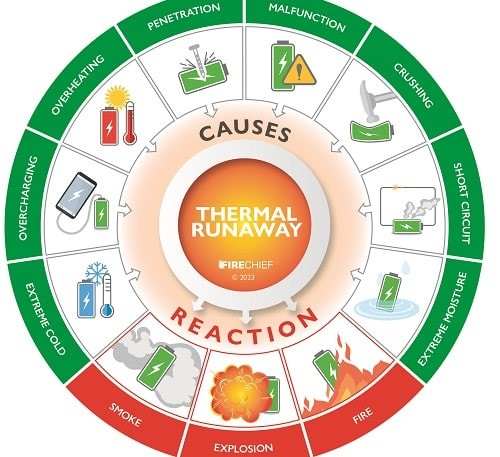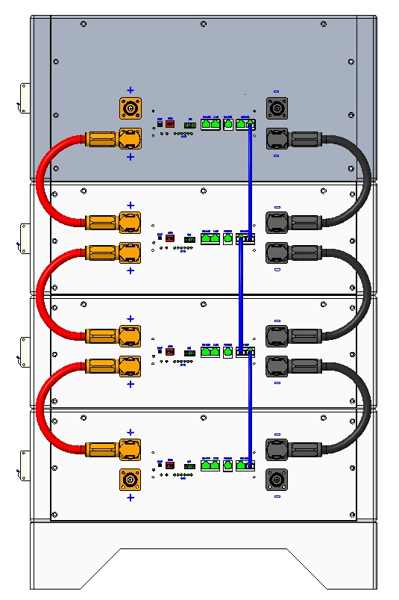Czy można układać akumulatory?
Kiedy próbujesz zorganizować warsztaty lub zaprojektować kompaktowy domowy system energetyczny, często pojawia się logiczne pytanie: Aby zaoszczędzić miejsce, Czy można układać akumulatory? To jest krytyczne pytanie bezpieczeństwa, A odpowiedź nie jest prosta tak lub nie. To zależy całkowicie od projektu akumulatora.
Arbitralnie układanie standardowych akumulatorów nie jest w porządku. To może być bardzo niebezpieczne. Jest bezpieczny tylko wtedy, gdy akumulatory są specjalnie zaprojektowane jako „opakowanie akumulatorów w stos" z funkcjami stabilności i bezpieczeństwa, lub jeśli są one instalowane profesjonalnie w wspierającym stojaku lub szafce. Profesjonalne rozwiązania mają na celu zarządzanie ryzykiem, podczas gdy tworzy je prosty stos baterii.

W Gycx Solar, Bezpieczeństwo jest podstawą każdego projektujemy system. The zestaw akumulatorów, który można układać w stosy Produkty, których używamy, są wybierane ze względu na ich funkcje bezpieczeństwa i są instalowane zgodnie z rygorystycznymi standardami. Zbadajmy kluczowe pytania dotyczące tego tematu.
Czy akumulatory litowe mogą się dotykać?
Masz kilka zapasowych baterii litowych, i chcesz przechowywać je razem w szufladzie lub pudełku. Czy dotknięcie? To kolejny krytyczny punkt bezpieczeństwa, w którym odpowiedź brzmi „nie”" dla luźnych komórek.
Terminale luźnych baterii litowych nigdy nie powinny mieć możliwości dotykania się lub dowolny przewodzący metalowy obiekt (Jak klucze lub monety). Ten kontakt może utworzyć zwarcie, powodując szybkie ogrzewanie baterii i tworzenie znacznego zagrożenia pożarowego. Jednakże, Modułowe pakiety akumulatorów w profesjonalnie zaprojektowanym systemie są zaprojektowane tak, aby były bezpiecznie umieszczone blisko siebie w obudowie ochronnej.

Nurkuj głębiej: Zagrożenie zwarci
Oto, co musisz wiedzieć:
- Niebezpieczeństwo: Zwarcie tworzy nieograniczoną ścieżkę przepływu energii elektrycznej z dodatniego do ujemnego terminalu. Bateria zrzuci całą swoją rezerwę energii niemal natychmiast na tę ścieżkę, generowanie intensywnego ciepła. Dla wysokoenergetycznych komórek litowo-jonowych, Może to z łatwością prowadzić do odpowietrzania łatwopalnych gazów i ognia.
- Bezpieczne przechowywanie luźnych komórek: Zawsze trzymaj luźne baterie w oryginalnych opakowaniach detalicznych, W dedykowanych plastikowych akumulatorach, lub z ich zaciskami pokryty. To izoluje terminale i zapobiega przypadkowemu kontaktowi.
- Jak to rozwiązują profesjonalne systemy: To jest kluczowy cel zestaw akumulatorów, który można układać w stosy system. Każdy moduł jest w pełni zamknięty, Ochrona jego wewnętrznych komórek. Zewnętrzne zaciski są zaprojektowane z osłonami i określonymi złączami, dzięki czemu można je podłączyć tylko w zamierzonych, bezpieczny sposób. Moduły mogą być umieszczone tuż obok siebie w stojak.
Czy mogę układać baterie na drugim?
Dowiedzmy się o fizycznym akcie układania. Czy można umieścić jedną baterię bezpośrednio na drugiej, aby zbudować pionową kolumnę?
Powinieneś nie układaj baterii bezpośrednio na siebie, chyba że są one specjalnie zaprojektowane, z funkcjami takimi jak wzmocniony, Zakrywające obudowy, które mogą znieść wagę. Dla większości systemów profesjonalnych, w tym Pakiety akumulatorowe, „Układanie" oznacza instalację ich na poszczególnych półkach lub szynach w bezpiecznym stojaku lub szafce. Zapewnia to właściwie obsługiwane moduł ciężkiego modułu.

Nurkuj głębiej: Integralność strukturalna i bezpieczeństwo
Oto ryzyko niewłaściwego bezpośredniego układania:
- Uszkodzenie mechaniczne: Waga górnych baterii może zmiażdżyć lub deformować obudowy tych na dole. To może uszkodzić elementy wewnętrzne, prowadząc do zwarcia i awarii.
- Niestabilność: Prosty stos baterii nie jest stabilny. Można go łatwo przewrócić, powodując upadek baterii i uszkodzony, tworząc zarówno zagrożenie fizyczne, jak i elektryczne.
- Problemy termiczne: Układanie baterii bezpośrednio na siebie może blokować przepływ powietrza i zatrzymać ciepło. Baterie wytwarzają ciepło podczas użytkowania, I to ciepło musi się rozproszyć, aby zapewnić im bezpieczeństwo i przedłużyć ich życie.
- Rozwiązanie zaprojektowane: Specjalnie zbudowany zestaw akumulatorów, który można układać w stosy System rozwiązuje te problemy. Jeśli moduły są przeznaczone do bezpośredniego układania, Ich instrukcje określi maksymalną bezpieczną wysokość. Jeśli są zamontowane w stojaku, stal stalowy zapewnia niezbędne wsparcie konstrukcyjne, stabilność, i odstępy na przepływ powietrza, Tworzenie bezpiecznego i niezawodnego bloku magazynowania energii.
Jak układasz baterie?
Potwierdziłeś, że masz baterie Czy zaprojektowany do ułożenia. Jaka jest właściwa procedura bezpiecznej i skutecznej instalacji?
„Układanie" Baterie obejmują dwa odrębne, ale powiązane procesy: 1) Instalacja mechaniczna, gdzie bezpiecznie układasz modułowe jednostki w ich konfiguracji zaprojektowanej (albo poprzez blokowanie ich bezpośrednio lub zamontowanie w stojaku). 2) Połączenie elektryczne, gdzie ostrożnie połączysz moduły razem, zazwyczaj w równoległy zwiększyć pojemność lub w seria zwiększyć napięcie, Zawsze przestrzegając instrukcji producenta.

Nurkuj głębiej: Profesjonalne podejście do układania
Oto metodologia profesjonalny instalator, Jak zespół Gycx Solar, następuje:
- Przygotuj fundament: Szafka lub stojak jest zmontowany i bezpiecznie zakotwiczony na podłogę lub ścianę, aby zapobiec szansę napiwki.
- Instalacja mechaniczna: Zaczynając od dołu, aby uzyskać stabilność, Każdy moduł akumulatora jest instalowany na jej półce lub szynach. Instalator zapewnia poziom każdego urządzenia, bezpieczny, i ma określony przez producenta prześwit w odniesieniu do wentylacji.
- Połączenie elektryczne: Z systemem de-energetyzowanym, Instalator łączy moduły.
- Równoległy (dla większej pojemności): Najczęstsza metoda przechowywania słonecznego. Wszystkie dodatnie terminale są podłączone do dodatniej szyny szynowej, i wszystkie negatywne zaciski na ujemną szynobarkę. Tworzy to pojedynczy duży bank baterii na tym samym napięciu co poszczególne moduły.
- Szereg (Aby uzyskać więcej napięcia): Dodatni modułu jest podłączone do ujemnego następnego w łańcuchu.
- Integracja systemu: Główne pozytywne i ujemne przewody z ukończonego banku baterii są podłączone do falownika, wraz z kluczowym BMS1 Kabel komunikacyjny.
- Uruchomienie: System jest zasilany we właściwej sekwencji, a falownik jest zaprogramowany z precyzyjnymi ustawieniami dla nowego, większy bank baterii.
Ten proces metodyczny zapewnia, że zestaw akumulatorów, który można układać w stosy jest nie tylko potężny, ale także zasadniczo bezpieczny i niezawodny.
Ile zapakowanych baterii możesz układać jeden na drugim?
To świetne praktyczne pytanie. A co z bateriami, które wciąż znajdują się w opakowaniu detalicznym? Widzimy, jak ułożone są wysoko w sklepach, Jak wysoko możesz bezpiecznie je ułożyć w domu?
Podczas gdy opakowanie detaliczne (jak kartonowe pudełko lub pakiet pęcherzy) doskonale nadaje się do zapobiegania zwarciom, Oferuje Bardzo ograniczone wsparcie strukturalne. Dla małych, Lekkie paczki akumulatorów AA lub AAA, Układanie ich na stopę lub dwie wysokości jest ogólnie w porządku. Dla ciężkich, akumulatory pełne obudowy (Jak zapieczętowane moduły kwasowe lub duże litowe), powinieneś Nigdy nie układaj je wyżej niż instrukcje producenta lub drukowane symbole w polu, wskazują. Jeśli nie ma instrukcji, Najlepsze jest bardzo konserwatywne podejście - uruchamianie ich więcej niż dwa lub trzy przypadki wysokie.

Nurkuj głębiej: Granice opakowania
Oto dlaczego nie możesz leczyć kartonowego pudełka jak stalowy stojak:
- Zagranianie zagrożenia: Waga górnych pudełek może łatwo zmiażdżyć karton dolnych. To może, z kolei, wywierać nacisk na baterie w środku, potencjalnie ich uszkadzając. Wgnieciona bateria litowo-jonowa jest potencjalnym zagrożeniem bezpieczeństwa.
- Poszukaj stosowania symboli: Profesjonalne opakowanie cięższych przedmiotów często obejmuje uznane na arenie międzynarodowej symbole:
- Symbol z dwoma ułożonymi pudełkami, z przekroczeniem góry, oznacza „Nie układaj."
- Symbol pokazujący liczbę powyżej dwóch ułożonych pól wskazuje Maksymalna liczba identycznych pudełek które można ułożyć na nim.
- Różnica w systemach profesjonalnych: Właśnie dlatego nasz profesjonalista zestaw akumulatorów, który można układać w stosy Systemy wykorzystują solidne stalowe stojaki lub szafki. Są one zaprojektowane w celu bezpiecznego obsługi pełnej wagi wielu ciężkich modułów baterii bez ryzyka kruszenia lub niestabilności. Opakowanie służy do transportu; Stojak na stałe, bezpieczne przechowywanie i działanie.
Gycx Solar Story: „Otrzymujemy nasze moduły baterii na paletach, które są starannie ułożone przez producenta zgodnie z ścisłymi przepisami transportowymi. Ale kiedy znajdą się w domu klienta, Wychodzą z skrzynek wysyłkowych i wchodzą na stałe, Zdecydowany stal stalowy. To jest standard słoneczny GYCX dla bezpieczeństwa."
Więc, Czy można układać akumulatory? Odpowiedź brzmi „nie”" dla swobodnego, Arbitralne stosowanie, i pewny siebie „Tak" dla profesjonalnie zaprojektowanych zestaw akumulatorów, który można układać w stosy systemy. Te nowoczesne rozwiązania są zaprojektowane od podstaw dla bezpiecznych, gęsty, i skalowalne magazynowanie energii.
Na Gycx Solar, Jesteśmy ekspertami w projektowaniu i instalowaniu tych bezpiecznych i niezawodnych systemów. Jeśli masz pytania o to, w jaki sposób kompakt, Rozwiązanie do baterii do stosu może zasilać Twój dom lub firmę, Skontaktuj się z naszym zespołem już dziś!
Zrozumienie koncepcji BMS pomoże Ci lepiej porównać i zrozumieć koncepcje danych związanych z baterią. Pomoże to wybrać produkt, który najlepiej odpowiada Twoim potrzebom od naszej firmy. ↩
